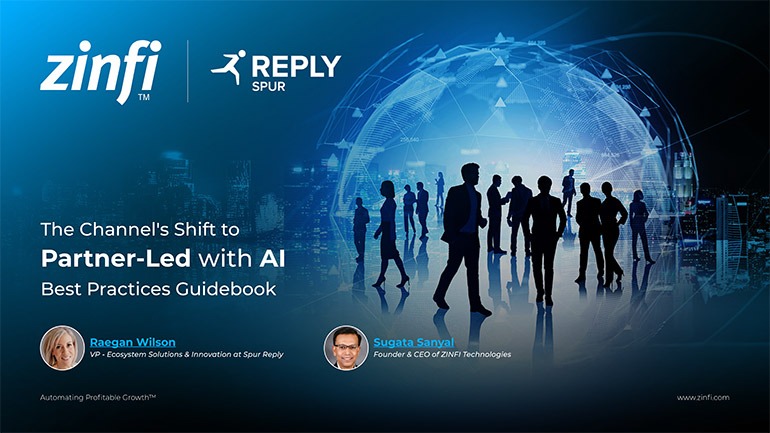Best Practices Articles

Enterprise PRM Software: Powering Scalable Channel Growth for Large Organizations
Enterprise PRM software is crucial for large organizations to manage and grow their indirect sales channels. It automates complex processes, enhances partner engagement, and provides deep insights for strategic decision-making and predictable revenue growth.
Key Takeaways:
- Manages complex partner networks
- Automates critical channel processes
- Boosts partner engagement and loyalty
- Provides data-driven insights
- Ensures global consistency and compliance
PRM Software: Driving Growth in Today's Economy
Large companies often look beyond direct sales for growth in today's global economy. Expanding market reach and entering new areas increasingly depend on strong indirect channels. This includes value-added resellers (VARs), distributors, system integrators (SIs), managed service providers (MSPs), referral partners, and independent software vendors (ISVs). These partners offer local expertise and a cost-effective way to dominate markets.
However, managing such a vast and complex network is challenging. It spans many regions, languages, regulations, and cultures. The massive number of partners, complex transactions, and large amounts of data can overwhelm manual methods. This leads to inefficiencies, lost opportunities, and channel conflicts.
Here, PRM software becomes a vital strategic tool. Enterprise PRM software is more advanced and robust than SMB versions. Developers design it to handle big, global companies' large-scale, complex nature and strict demands. It acts as the central hub for your entire partner ecosystem. It automates key processes, offers detailed visibility into partner engagement, and builds a collaborative, high-performing, and beneficial partner network.
This guide explores what defines PRM software for enterprises. It examines the challenges it overcomes and highlights its crucial features and benefits. It also outlines strategic considerations for successful implementation and long-term optimization.
What is PRM Software? The Evolution of Channel Management
At its core, PRM software streamlines automates, and optimizes the entire partner lifecycle. This includes partner recruitment, onboarding, sales and marketing enablement, incentive management, and performance tracking. Enterprise PRM software represents a significant evolution of this concept. Developers specifically design it to meet large, often multinational corporations' operational realities and demands.
A basic PRM solution might suffice for a new channel program or a few partners. However, full-fledged Enterprise PRM software is distinctly different and critical. It is known for its inherent capabilities in:
- Unparalleled Scalability: It efficiently manages thousands of partner organizations and millions of transactions without performance loss. This strong infrastructure supports channel growth.
- Inherent Global Readiness: Developers design it for a global presence. It supports multi-language interfaces, multi-currency transactions, and multi-region operations. This ensures a consistent partner experience worldwide.
- Mastery of Complexity Handling: It manages intricate partner hierarchies and tiered programs. It also handles complex deal registration and multi-layered incentive structures. This is vital for large companies with diverse partner models.
- Profound Deep Integration Capabilities: Developers engineer PRM software for seamless, bidirectional data flow. This includes integrations with CRM, ERP, Marketing Automation Platforms (MAPs), SCM systems, and BI tools. This provides a unified, accurate, and real-time view of business data.
- Uncompromising Robust Security & Compliance: Enterprise PRM software meets strict data security, privacy, and regulatory compliance standards. This includes GDPR, CCPA, ISO 27001, and SOC 2. It safeguards sensitive partner and customer data.
- Expansive Comprehensive Feature Set: It offers a wide array of advanced functions. These features automate nearly every aspect of partner engagement, enablement, management, and performance optimization. It provides a holistic platform for channel operations.
Essentially, PRM software goes beyond a simple administrative tool. It transforms a chaotic partner network into an organized, efficient, and revenue-generating system. It represents a strategic evolution, moving beyond basic partner contact management. It establishes itself as a sophisticated platform that orchestrates complex channel operations on a large scale.
The Unique Challenges of Enterprise Channel Ecosystems
Large organizations face distinct challenges when managing indirect sales channels. These complexities explain why generic PRM solutions fall short. Enterprise PRM software capabilities become indispensable.
- Sheer Scale and Volume:
- The Problem: Tracking leads, deals, and performance for thousands of partners globally is daunting. The volume of data, communications, and transactions becomes overwhelming. Spreadsheets become data graveyards, and emails lose critical information. This administrative burden stifles proactive channel development.
- How PRM Software Solves it: Enterprise PRM software automates repetitive tasks. It centralizes all partner data in a scalable infrastructure. This frees channel managers to focus on strategy.
- Profound Global Complexity and Localization:
- The Problem: Global channels involve navigating different languages, currencies, time zones, regulations, tax laws, and cultural expectations. A rigid "one-size-fits-all" approach alienates partners and creates compliance risks.
- How PRM Software Solves it: It offers multi-language and multi-currency support. It facilitates region-specific program management, allowing tailored content and campaigns. This ensures global consistency with local relevance.
- Managing Diverse Partner Types and Intricate Tiers:
- The Problem: Enterprises work with many partner types, each with unique needs. Manually managing these distinct "personas" is a logistical nightmare.
- How PRM Software Solves it: It enables sophisticated partner segmentation and multi-tiered program management. This allows customized portals, tailored content, differentiated incentives, and specific program benefits for each group.
- Demanding Deep Integration Requirements:
- The Problem: Enterprise operations rely on complex CRM, ERP, and MAP software systems. Without seamless integration, data silos emerge. This leads to inconsistent data, redundant entries, and a fragmented view of performance.
- How PRM Software Solves it: It provides robust integration frameworks, including open APIs and pre-built connectors. This creates a unified data landscape and a single source of truth.
- Pervasive Data Silos and Inconsistent Information:
- The Problem: Critical partner data residing in disconnected systems makes a holistic view impossible. This fragmentation leads to unreliable forecasting and suboptimal resource allocation.
- How PRM Software Solves it: It is the central repository for all partner data. Consolidating information provides comprehensive reporting and actionable insights.
- Persistent Channel Conflict and Complex Attribution:
- The Problem: Channel conflict is a constant threat in large partner networks. Accurately attributing revenue in multi-partner deals is challenging.
- How PRM Software Solves it: It implements deal registration rules and automated lead routing. It supports multi-partner attribution models, ensuring transparency and fairness.
- Rigorous Compliance and Stringent Security:
- The Problem: Large enterprises operate under strict regulations and face cyber threats. Partner data requires the highest security standards. Non-compliance or breaches result in severe penalties.
- How PRM Software Solves it: It offers enterprise-grade security features. It adheres to global compliance certifications, ensuring data integrity and regulatory adherence.
- Maintaining Governance and Brand Consistency at Scale:
- The Problem: Ensuring consistent brand messaging and policy adherence across thousands of global partners is monumental. Without centralized control, brand dilution and compliance breaches are risks.
- How PRM Software Solves it: It provides centralized control over shared content and guidelines. It allows for localized customization while maintaining global consistency.
- Achieving Performance Visibility and Accurate ROI Attribution:
- The Problem: Measuring the ROI of channel programs and identifying top performers is complex with fragmented data. This lack of visibility leads to inefficient resource allocation.
- How PRM Software Solves it: It delivers powerful analytics and reporting tools. These provide deep insights into channel performance, allowing data-driven optimization.
These challenges highlight why PRM software is a transformative shift. It helps large organizations manage, optimize, and scale indirect sales channels for sustained advantage.
Industry-Specific Demands: Tailoring PRM Software to Your Ecosystem
While PRM software offers universal benefits, specific industries demand tailored capabilities. A generic platform often cannot fully address these specialized requirements.
- Complex Manufacturing Ecosystems
Global manufacturing firms have intricate supply chains and distribution networks. Their partner ecosystems include raw material suppliers, component manufacturers, logistics providers, service partners, and specialized integrators.
- Specific PRM Software Needs for Manufacturing:
- Integrated Supply Chain Visibility & Collaboration: PRM software must integrate with ERP and SCM systems. This gives partners access to real-time inventory, order statuses, and production schedules.
- Seamless Complex Product Configuration & Quoting (CPQ) Integration: PRM software needs integration with CPQ tools for configurable products. Partners can configure, price, and quote complex solutions through the portal.
- Comprehensive Service & Maintenance Partner Management: Manufacturers rely on certified service partners. PRM software needs modules for managing service certifications, dispatching requests, tracking SLAs, and streamlining spare parts.
- Integrated Warranty & Returns Management: PRM software must integrate with warranties and returns systems. Partners need streamlined processes for claims and returns.
- Rigorous Compliance & Quality Control Documentation: PRM software supports documentation management for regulated manufacturing for compliance and quality audits. It manages partner certifications for ISO standards and regulatory approvals.
- Optimized Global Logistics & Fulfillment Coordination: Features enabling coordination with logistics partners and tracking international shipments reduce friction and delays.
- High-Tech / IT Ecosystems
The high-tech and IT sectors feature constant innovation and complex solutions. They include VARs, SIs, ISVs, CSPs, MSPs, and technology alliance partners.
- Specific PRM Software Needs for High-Tech/IT:
- Facilitating Joint Solution Development & Co-Innovation: PRM software needs features to facilitate technical collaboration and joint solution creation. This might include integrated project management tools or secure access to shared code.
- Extensive Deep Technical Enablement & Certification: High-tech partners need technical training and certifications. The integrated LMS within PRM software must deliver complex content and manage certification paths.
- Seamless Cloud Marketplace Integration: For CSPs and ISVs, PRM software streamlines listing solutions and co-selling with cloud providers. It ensures precise revenue attribution for marketplace transactions.
- Sophisticated Subscription & Usage-Based Billing Management: PRM software must support complex recurring revenue calculations and automated commission payouts as IT shifts to subscription models.
- Uncompromising Security & Data Privacy Expertise: Given sensitive IT data, PRM software must demonstrate unparalleled security protocols and adherence to global data privacy regulations.
- Agile Content Updates & Version Control: PRM software's content management needs robust version control and rapid deployment in a rapidly changing industry. This ensures partners always have the latest information.
- Telecommunications (Telco) Ecosystems
Telcos operate complex networks and rely on diverse partners for infrastructure, connectivity, content, and customer acquisition. Their ecosystems include network providers, wholesale carriers, retail agents, content providers, and IoT partners.
- Specific PRM Software Needs for Telco:
- Network Infrastructure & Service Delivery Management: PRM software needs to facilitate collaboration with partners involved in network build-out and service delivery. This might include tracking deployment projects and managing service provisioning workflows.
- Highly Complex Commission & Billing Structures: Telco services have intricate commission structures. PRM software's incentive engine must handle multi-dimensional calculations for precise payouts.
- Rigorous Regulatory Compliance & Licensing Management: The telco industry is heavily regulated. PRM software must support documentation for partner licensing and track regulatory compliance.
- Deep Customer Lifecycle Management (CLM) Integration: Seamless integration with CLM systems is vital. This enables tracking customer acquisition, churn, and upgrades driven by partners.
- Specialized IoT & Emerging Technology Partner Management: As telcos expand into IoT and 5G, PRM software needs to adapt. It must manage new partner categories and facilitate joint solution development for innovative services.
- Seamless Service Assurance & Support Coordination: Facilitating seamless hand-offs for customer support between internal teams and partners is critical. PRM software should integrate with ticketing and support systems.
These examples show that while PRM software benefits are universal, its features must adapt to each industry's unique demands. An effective PRM software is a configurable system.
Critical Features of PRM Software
To address complexities, PRM software offers a robust set of features. Evaluate platforms based on the depth and flexibility of these capabilities.
- Advanced Partner Portal:
- Beyond Basic: An enterprise partner portal is a customizable, dynamic, and intuitive hub. It acts as a personalized command center for each partner.
- Key Capabilities: It offers granular Role-Based Access Control (RBAC). Single Sign-On (SSO) integration is crucial. Multi-Language Support and Multi-Currency Display are non-negotiable. The portal must be mobile-responsive. It provides Personalized Dashboards. Extensive Self-Service Options empower partners. It allows deep branding and customization.
- Robust Partner Onboarding & Lifecycle Management:
- Automated Workflows: Automate the entire partner journey. This includes application submission, qualification, e-signatures, welcome kits, and training assignments.
- Comprehensive LMS (Learning Management System): An integrated LMS is vital. It delivers structured training paths, product knowledge, and certifications. It tracks partner progress and proficiency. It supports various content formats and gamification.
- Tiered Onboarding & Progression: The system should tailor onboarding based on partner type, tier, or region.
- Sophisticated Deal Registration & Opportunity Management:
- Complex Routing & Approval: Handle intricate deal registration workflows. This includes multi-level approvals and automated exception handling.
- Multi-Partner Attribution: Accurately attribute credit in deals involving multiple partners.
- Deep CRM Synchronization: Real-time, bidirectional synchronization with enterprise CRMs is paramount. This ensures a unified pipeline view and prevents channel conflict.
- Forecasting & Pipeline Visibility: Provide accurate, real-time visibility into the channel pipeline.
- Comprehensive Marketing & Sales Enablement:
- Dynamic Content Management: A centralized CMS for all sales collateral and marketing assets. It supports dynamic content personalization. Version control is critical.
- Co-Branding Automation: Empower partners to easily co-brand marketing materials while maintaining brand control.
- Advanced TCMA (Through-Channel Marketing Automation): Enable partners to launch pre-approved marketing campaigns. This includes campaign analytics and lead capture integration.
- Sales Playbooks & Competitive Intelligence: Provide partners with guided selling paths and competitive analysis.
- Flexible Incentive & Funds Management:
- Complex Commission & Rebate Engine: Support for granular and multi-tiered commission structures and SPIFFs. The engine must be configurable.
- Automated MDF/Co-Op Fund Management: Streamline fund allocation, request submission, approval, and claim processing. This ensures efficient fund utilization.
- Global Payout Capabilities: Facilitate accurate and timely payouts across currencies and regions.
- Audit Trails & Transparency: Provide clear audit trails for all incentive activities.
- Robust Analytics & Business Intelligence:
- Customizable Dashboards: Allow channel managers to create personalized dashboards with KPIs.
- Deep Reporting Capabilities: Generate detailed reports on partner performance, deal velocity, and program effectiveness.
- Predictive Analytics & AI: Leverage AI and ML to identify trends, predict partner behavior, and recommend optimization strategies.
- Integration with Enterprise BI Tools: Seamlessly connect with existing BI platforms for advanced data visualization.
- Enterprise-Grade Integration Framework:
- Open APIs & Webhooks: Provide robust APIs and webhooks for real-time, custom integrations.
- Pre-built Connectors: Offer out-of-the-box integrations with leading CRMs, ERPs, and marketing automation platforms.
- Data Warehousing Capabilities: Ability to feed PRM data into or pull data from existing data warehouses.
- Security, Compliance & Governance:
- Data Encryption: Implement robust data encryption.
- Robust Access Controls: Granular, role-based security settings ensure authorized data access.
- Comprehensive Audit Logs: Maintain detailed logs of all user activities for compliance and security.
- Regulatory Compliance: Adherence to major global data privacy regulations and industry-specific standards.
- Disaster Recovery & Business Continuity: Comprehensive plans ensure continuous operation and rapid data recovery.
- Vendor Security Certifications: Look for vendors with recognized security certifications.
- Multi-Language & Multi-Currency Support:
- Complete Localization: Support for multiple languages across the platform.
- Automated Currency Conversion: Handle transactions and reporting in various currencies with automated conversion rates.
- Partner Segmentation & Tiering:
- Dynamic Management: Define, manage, and assign partners to multiple tiers based on customizable criteria.
- Tailored Experiences: Deliver differentiated content, training, incentives, and support based on a partner's segment or tier.
- Accelerated and Predictable Revenue Growth:
- Empowered Partners: PRM software provides partners with tools and support, transforming them into effective sellers. This increases sales productivity.
- Faster Deal Cycles: Streamlined deal registration and automated lead distribution accelerate deal velocity.
- Expanded Market Reach: Efficiently recruiting and managing a global partner network allows faster market penetration.
- Optimized Programs: Deep analytics help identify effective channel programs and incentives. This leads to continuous optimization and higher channel ROI.
- Enhanced Operational Efficiency and Cost Reduction:
These features differentiate PRM software, enabling large organizations to manage complex channel ecosystems effectively.
The Transformative Benefits of PRM Software
Implementing PRM software is a profound transformation. It benefits a large organization's bottom line and strategic objectives.
- Automation of Manual Tasks: PRM software reduces administrative burden by automating onboarding, deal processing, and incentive calculations. This frees up resources for strategic development.
- Streamlined Workflows: It standardizes and optimizes channel processes, eliminating redundancies and ensuring consistent execution.
- Reduced Operational Costs: Automation and efficiency gains directly translate into lower costs.
- Profound Improvement in Partner Engagement & Loyalty:
- Ease of Doing Business: An intuitive partner portal makes it easier for partners to interact.
- Transparency & Trust: Clear visibility into deal statuses and accurate payouts foster trust.
- Personalized Experience: Tailored content and training make partners feel valued, increasing commitment.
- Reduced Partner Churn: Engaged and supported partners are more loyal.
- Superior Channel Visibility, Control, and Governance:
- Single Source of Truth: Centralizing all partner data provides a holistic view.
- Real-time Insights: Gain immediate access to performance data for proactive decision-making.
- Proactive Problem Solving: Deep analytics enable early identification of issues.
- Centralized Governance: Maintain consistent branding and policy adherence across your global network.
- Significant Reduction in Channel Conflict: Automated lead routing and deal registration minimize disputes among partners and internal teams. This fosters collaboration.
- Global Consistency with Essential Local Relevance: PRM software allows a unified global channel strategy while enabling localization of content and campaigns. This balance is crucial for international success.
- Inherent Scalability for Future Growth: The core architecture handles increasing partner volumes and expanding footprints—this future-proofs channel operations.
These benefits collectively position PRM software as an indispensable enabler for large organizations. It maximizes channel potential, achieves predictable growth, and secures a lasting competitive advantage.
Implementing PRM Software: Strategic Considerations
Implementing PRM software is a significant, complex undertaking. It requires meticulous planning, dedicated resources, and a strategic approach. View it as a pivotal business transformation.
- A Phased Approach is Key:
- Avoid the "Big Bang" Pitfall: Do not attempt to simultaneously implement every feature and integration. This leads to delays and frustration.
- Prioritize Core Functionalities for Early Wins: Prioritize critical features that address immediate pain points and deliver rapid value. Early successes build momentum.
- Iterative Rollout & Continuous Improvement: Gradually introduce additional modules and features in phases. This allows teams and partners to adapt, provides feedback opportunities, and ensures a smoother transition.
- Robust Data Migration & Integration Strategy is Paramount:
- Data Cleanliness as a Prerequisite: Clean and standardize existing partner data before migration. Poor data quality incapacitates the new system.
- Comprehensive Data Mapping: Meticulously plan and document data flow between the new PRM and other enterprise systems. This is crucial for accurate reporting.
- Bidirectional Real-time Synchronization: Ensure real-time, two-way data synchronization. This is vital for maintaining a single source of truth.
- Strategic API Utilization: Develop a clear API strategy if custom integrations are needed. Allocate sufficient technical resources. Consider middleware solutions for complex landscapes.
- Comprehensive Change Management & Adoption Strategy:
- Unwavering Executive Sponsorship: Strong leadership buy-in is essential. Their advocacy drives adoption.
- Targeted Internal Training Programs: Develop role-specific training programs for channel managers and sales teams. Training should be ongoing.
- Proactive Partner Onboarding & Communication: Craft a clear communication plan for partners. Highlight tangible benefits. Provide intuitive guides and support channels.
- Establish Continuous Feedback Loops: Implement formal mechanisms for collecting feedback from users and partners. Prioritize enhancements and communicate how their input drives optimization.
- Dedicated Cross-Functional Project Team:
- Strong Project Leadership: Appoint an experienced project manager.
- Core Cross-Functional Team: Assemble a dedicated team from Channel Management, Sales Operations, Marketing, IT, and Finance. This ensures all perspectives are represented.
- Executive Steering Committee: Establish an executive committee for strategic oversight and progress review.
- Cultivating a Strategic Vendor Partnership:
- Beyond the Transaction: Look for a PRM software vendor committed to being a true strategic partner. This means a vendor with deep channel expertise.
- Proven Implementation Methodology: Inquire about their methodology and professional services. Look for a track record of successful implementations.
- Dedicated Customer Success: A strong customer success program can be invaluable for continuous optimization. They should invest in your success.
- Proof of Concept (POC): A POC validates capabilities and assesses integration feasibility for large enterprises.
- Setting Realistic Time-to-Value Expectations: Full-scale implementation takes time. Set realistic expectations for rollout phases and communicate timelines. Celebrate early wins to maintain momentum. Typical timelines for complex global rollouts range from 3 to 9 months or longer.
- Comprehensive Budgeting for Total Cost of Ownership (TCO):
- Look Beyond Licensing Fees: The subscription fee is only one component.
- One-time Costs: Account for implementation fees, customization, integration development, and initial training.
- Ongoing Costs: Include ongoing support, maintenance, and potential costs for additional modules.
- Long-Term ROI Focus: Focus on the long-term benefits and ROI that PRM software delivers.
A well-executed PRM software implementation transforms channel operations. It converts complexity into a powerful growth engine. This transformation requires unwavering commitment and meticulous planning.
Measuring Success & Quantifying ROI of PRM Software
Justifying PRM software investment requires a data-driven approach. Focus on KPIs that directly tie to strategic business objectives.
- Key Metrics for PRM Software Success:
- Partner-Sourced Revenue & Pipeline Contribution: Total revenue directly attributed to partners and their percentage of the overall sales pipeline. PRM software provides accurate data for tracking revenue by partner type, region, and campaigns.
- Partner Lifetime Value (PLV): Total revenue a partner is expected to generate over their relationship. PRM data on engagement and performance helps calculate this—segment PLV by partner tier.
- Partner Engagement & Activity Rates: How actively partners use the portal, access content, complete training, and register deals. PRM software provides granular data. Identify "at-risk" partners.
- Time-to-Onboard & Time-to-First Deal: Average time for new partners to complete onboarding and close their first deal. PRM software's automated workflows provide precise tracking.
- Deal Velocity & Win Rates (Channel vs. Direct): Speed at which channel deals move through the pipeline and conversion rate. PRM software provides this data. Compare channel rates against direct sales.
- MDF (Market Development Funds) Utilization & ROI: Percentage of allocated MDF partners utilize and measurable return from those funds. PRM software's MDF management provides detailed tracking.
- Partner Satisfaction (PSAT) & Net Promoter Score (NPS): Surveys and feedback mechanisms within PRM software to gauge partner satisfaction. Correlate satisfaction scores with performance.
- Channel Manager Efficiency: Number of partners a channel manager supports and reduction in administrative time. PRM automation directly impacts this.
- Attribution Models in PRM Software: Simple attribution models are often insufficient for complex enterprises. PRM software supports sophisticated models:
- Multi-touch Attribution: Assigns credit across all touchpoints where a partner was involved.
- Weighted Attribution: Assigns different weights to various partner activities.
- Influence Attribution: Measures how much a partner influenced a deal.
Leveraging these metrics and advanced attribution capabilities provides a granular understanding of channel performance. It helps optimize strategies and demonstrate ROI.
The ZINFI PartnerOps Framework: A Blueprint for PRM Software Success
For large organizations, a robust technology platform needs a sound operational strategy. ZINFI champions its PartnerOps Framework for predictable and scalable channel growth. Inspired by Revenue Operations (RevOps), PartnerOps unifies data, tools, and workflows. A comprehensive PRM software solution, like ZINFI's Unified Partner Management (UPM) platform, powers the PartnerOps Framework.
Download our guidebook on how to "Build a PartnerOps function that delivers strategy, structure, and AI-driven execution across your partner ecosystem."
- Strategize:
- Enterprise Context: Strategy involves meticulous market analysis and defining complex partner segmentation models. It includes developing sophisticated tiered programs.
- PRM Software's Role: PRM software provides data and analytics to inform strategic decisions. It allows dynamic segmentation and modeling incentive scenarios. It serves as the central repository for partner profiles and agreements.
- Recruit:
- Enterprise Context: Recruiting means attracting diverse, high-quality partners globally through targeted campaigns. It involves managing a large pipeline and ensuring compliance.
- PRM Software's Role: PRM software automates the recruitment process. This means efficiently scaling recruitment globally without overwhelming internal teams.
- Onboard:
- Enterprise Context: Onboarding involves rapidly bringing thousands of diverse partners up to speed. This often requires personalized onboarding paths.
- PRM Software's Role: PRM software excels in automated, personalized onboarding. Its integrated LMS delivers tailored training paths and certifications.
- Enable:
- Enterprise Context: Enabling partners at an enterprise scale means providing continuous access to the latest product information and sales tools. This requires dynamic content delivery.
- PRM Software's Role: PRM software's advanced content management ensures partners always have the latest, localized sales collateral. This means maintaining brand consistency across diverse markets.
- Co-Market:
- Enterprise Context: Co-marketing efforts empower thousands of partners to execute localized campaigns. This often leverages MDF.
- PRM Software's Role: Through-Channel Marketing Automation (TCMA) capabilities within PRM software empower partners with co-brandable campaigns. This drives demand generation efficiently.
- Co-Sell:
- Enterprise Context: Co-selling involves managing complex, multi-party sales cycles. Accurate lead distribution and deal registration are paramount.
- PRM Software's Role: PRM software's sophisticated deal registration and lead management facilitate seamless co-selling. This means managing complex opportunities and minimizing channel conflict globally.
- Incentivize:
- Enterprise Context: Incentivizing a global channel requires managing complex commission structures and MDF programs across currencies.
- PRM Software's Role: PRM software automates complex incentive structures. This ensures transparent and accurate payouts.
- Accelerate:
- Enterprise Context: Acceleration means continuously optimizing channel performance and addressing underperformance. This often leverages AI and predictive analytics.
- PRM Software's Role: The powerful analytics and reporting within PRM software provide deep insights into partner performance. This data is crucial for optimizing investments and accelerating channel growth.
Large organizations can move beyond simply managing channels by embracing the PartnerOps Framework, powered by robust PRM software. They strategically optimize for predictable, scalable, and profitable growth. This builds a cohesive, intelligent channel ecosystem.
Future Trends in PRM Software: The Horizon of Channel Innovation
The landscape of PRM software is constantly evolving. Here are some key trends shaping its future:
- Hyper-Personalization and AI-Driven Experiences:
- Trend: PRM software will leverage AI and machine learning for highly personalized partner experiences. This includes dynamic content recommendations and AI-powered conversational interfaces.
- Impact: Increases partner stickiness and maximizes individual partner productivity.
- Deeper Ecosystem Orchestration:
- Trend: PRM software will expand its scope to become a broader "ecosystem orchestration" platform. This means managing relationships with various partners, including co-development partners.
- Impact: Enables enterprises to build complex go-to-market strategies and unlock new revenue streams.
- Advanced Predictive Analytics and Prescriptive Insights:
- Trend: AI and ML will predict future partner behavior. PRM software will offer prescriptive recommendations to channel managers.
- Impact: Transforms channel management from reactive to proactive, maximizing partner success.
- Blockchain for Enhanced Transparency and Trust:
- Trend: Blockchain promises to increase transparency in channel operations, especially for deal registration and incentive payouts. Smart contracts could automate commission calculations.
- Impact: Builds deeper trust with partners by providing verifiable records.
- Low-Code/No-Code Customization:
- Trend: PRM software platforms will increasingly offer low-code/no-code tools. This empowers channel operations teams to configure workflows without heavy IT reliance.
- Impact: Accelerates time-to-market for new programs and increases agility.
- Integrated Financial and Contract Management:
- Trend: Tighter integration with financial systems and advanced contract lifecycle management (CLM) capabilities directly within PRM software. This includes automated contract generation and compliance checks.
- Impact: Reduces legal and financial risks and streamlines administrative processes.
- Voice and Conversational AI for Partner Support:
- Trend: Integration of conversational AI (chatbots, voice assistants) within the partner portal. This provides instant, 24/7 support for common partner queries.
- Impact: Improves partner satisfaction and reduces workload on support teams.
These trends signify a future where PRM software becomes more intelligent and interconnected. It will enable large organizations to navigate complex channel ecosystems with unprecedented agility.
Conclusion
For large enterprises, scalable growth ties directly to the strength of their indirect sales channels. Managing a vast global partner ecosystem presents undeniable complexities. However, PRM software is the essential technological foundation to overcome these challenges.
It is a sophisticated platform engineered to handle immense scale and diverse partner types. It transforms manual processes into a unified, high-performing, and intelligently managed channel engine. From automating onboarding and streamlining deal registration to empowering partners with localized marketing tools and providing deep performance analytics, PRM software delivers profound benefits. These include accelerated revenue generation, enhanced operational efficiency, improved partner engagement, and superior channel visibility.
Realizing the full potential of this powerful solution requires more than just acquisition. It demands a strategic implementation approach, meticulous planning, a strong commitment to change management, and a deep understanding of your industry's ecosystem. Large organizations can unlock their partner ecosystems' full potential by choosing a scalable, secure, and globally ready solution that aligns with their needs and adopting a holistic framework like ZINFI's PartnerOps. This strategic investment ensures sustainable growth, fosters productive partner relationships, and secures a lasting competitive edge. Investing in PRM software is a critical, forward-looking investment in your enterprise's growth strategy.
Best Practices Guidebook
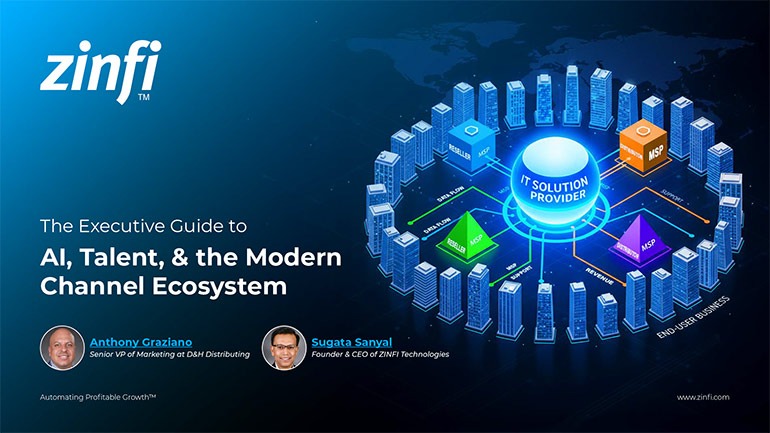 Modernizing Channel Marketing: AI and Ecosystem Enablement Best Practices
Modernizing Channel Marketing: AI and Ecosystem Enablement Best PracticesDownload for FREE
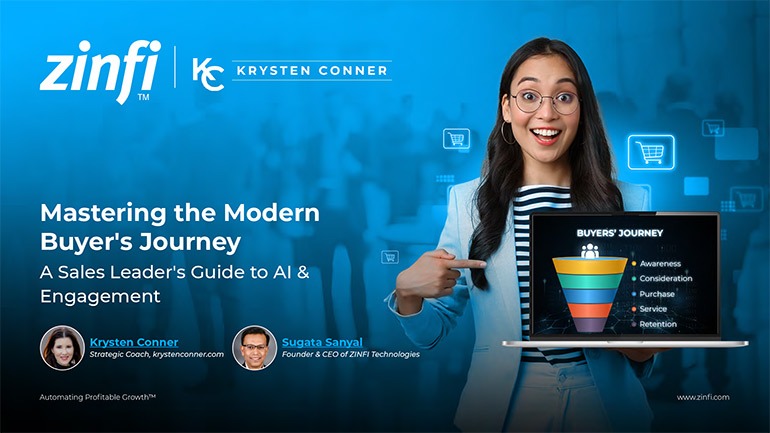 The Channel’s Shift to Partner-Led With AI Best Practices
The Channel’s Shift to Partner-Led With AI Best PracticesDownload for FREE
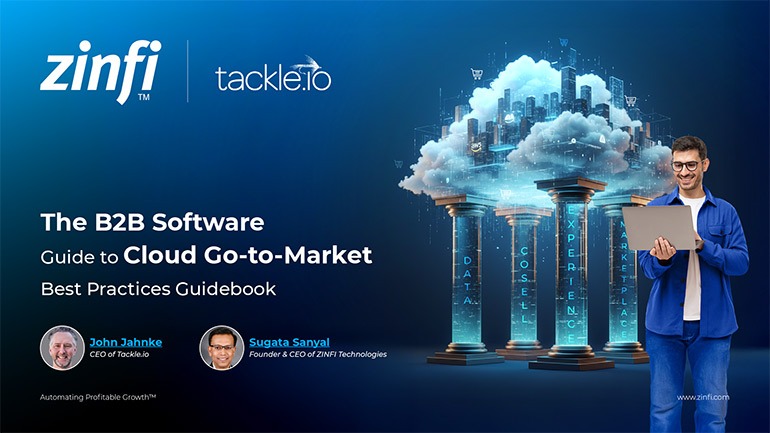 Hyperscalers, ISVs, and AI: Shaping the Future of B2B Software Distribution
Hyperscalers, ISVs, and AI: Shaping the Future of B2B Software DistributionDownload for FREE
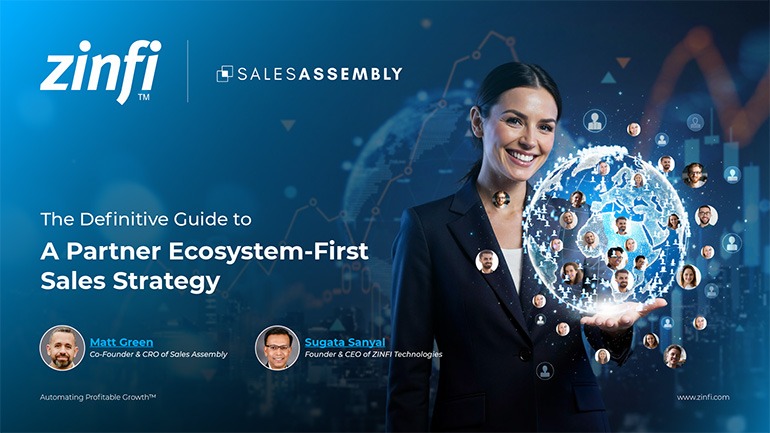 Definitive Guide to a Partner Ecosystem-First Sales Strategy
Definitive Guide to a Partner Ecosystem-First Sales StrategyDownload for FREE
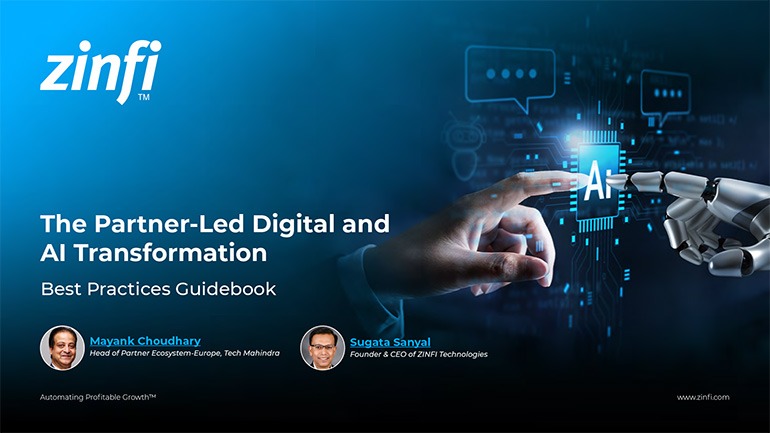 The Partner-Led Digital and AI Transformation Best Practices
The Partner-Led Digital and AI Transformation Best PracticesDownload for FREE
 Startup Talent Recruitment: Hiring Missionaries, Not Mercenaries
Startup Talent Recruitment: Hiring Missionaries, Not MercenariesDownload for FREE
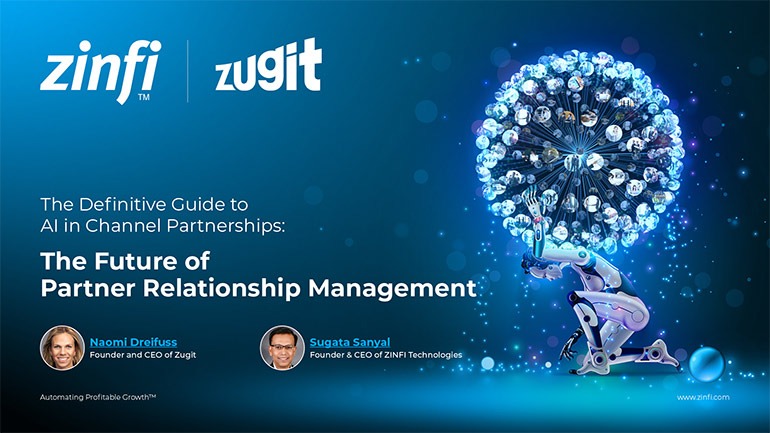 The Future of Partner Relationship Management with AI in Partnerships
The Future of Partner Relationship Management with AI in PartnershipsDownload for FREE
 Cybersecurity for the 99%: Strategies from the Frontline
Cybersecurity for the 99%: Strategies from the FrontlineDownload for FREE
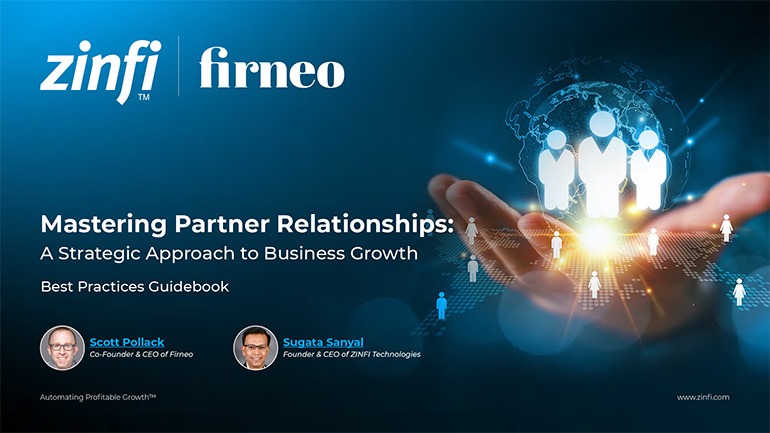 Mastering Partner Relationships: A Strategic Approach to Business Growth
Mastering Partner Relationships: A Strategic Approach to Business GrowthDownload for FREE
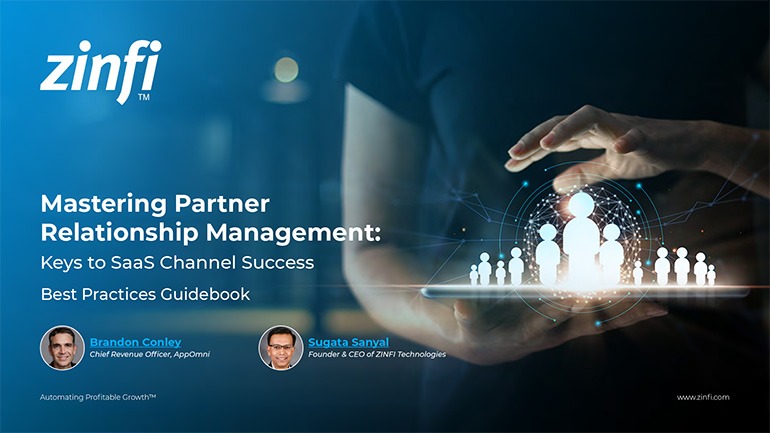 Mastering Partner Relationship Management: Keys to SaaS Channel Success
Mastering Partner Relationship Management: Keys to SaaS Channel SuccessDownload for FREE
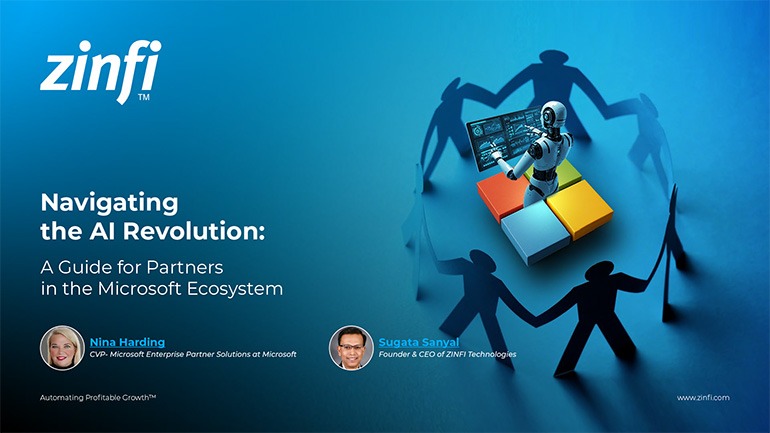 Navigating the AI Revolution: Guide for Partners in the Microsoft Ecosystem
Navigating the AI Revolution: Guide for Partners in the Microsoft EcosystemDownload for FREE
 Mastering the Modern Buyers Journey: Sales Leader’s Guide to AI & Engagement
Mastering the Modern Buyers Journey: Sales Leader’s Guide to AI & EngagementDownload for FREE

